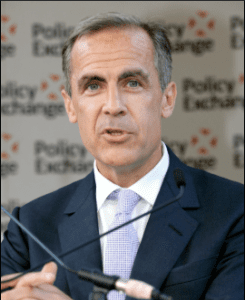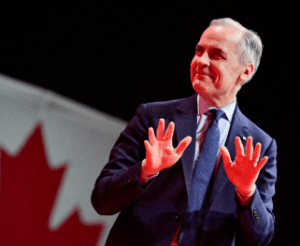Ottawa: In a significant political development that could mark a new chapter in India-Canada relations, Mark Carney has emerged victorious in Canada’s 2025 federal elections, securing the Prime Ministerial position as the leader of the Liberal Party. This win solidifies the Liberal Party’s place in Canadian political history, as it clinched a fourth consecutive term in office—an exceptional achievement in a typically volatile electoral landscape.
Shortly after the official results were declared, Indian Prime Minister Narendra Modi took to social media to congratulate Carney on his electoral success. PM Modi expressed optimism about rejuvenating and strengthening the multifaceted partnership between India and Canada, which has faced turbulence in recent years over diplomatic issues. His message emphasized the need for collaboration based on “shared democratic values, strong people-to-people ties, and common aspirations for a peaceful, prosperous world.”
Mark Carney’s Path to the Premiership: From Central Banker to Political Powerhouse
 Mark Carney’s rise to Canada’s highest office is nothing short of extraordinary. A globally respected economist and former Governor of both the Bank of Canada and the Bank of England, Carney was initially seen as a technocratic outsider in Canadian politics. However, following the resignation of long-time Prime Minister Justin Trudeau in early 2025, Carney was brought in to revitalize the Liberal Party, which had been facing internal fatigue and declining popularity.
Mark Carney’s rise to Canada’s highest office is nothing short of extraordinary. A globally respected economist and former Governor of both the Bank of Canada and the Bank of England, Carney was initially seen as a technocratic outsider in Canadian politics. However, following the resignation of long-time Prime Minister Justin Trudeau in early 2025, Carney was brought in to revitalize the Liberal Party, which had been facing internal fatigue and declining popularity.
Despite lacking prior electoral experience, Carney’s reputation for economic prudence, crisis management (notably during the 2008 global financial crash), and international diplomacy helped rebuild voter trust. His campaign focused heavily on restoring Canada’s economic confidence, ensuring social equity, and repairing international relations, particularly after a tense period in North American geopolitics.
A Tumultuous Election Influenced by International Tensions
The 2025 Canadian election unfolded against a backdrop of global uncertainty and regional instability, most notably the strained cross-border dynamics with the United States. Observers widely believe that U.S. President Donald Trump’s revived nationalist policies, including aggressive trade renegotiations and inflammatory annexation rhetoric aimed at Canadian border territories, played a decisive role in rallying public support behind the Liberals.
Trump’s rhetoric—which included veiled threats of economic sanctions and provocative commentary about Canadian sovereignty—stoked anxiety across Canada’s political spectrum. In contrast, Carney projected a composed, diplomatic image, promising to safeguard Canada’s economic independence, democratic integrity, and international alliances. This clear contrast in leadership styles contributed significantly to the Liberal Party’s last-minute surge in polls, ultimately flipping several close constituencies on election night.
Carney’s victory speech underlined his commitment to restoring Canada’s global reputation, repairing cross-border relations through diplomatic means, and reinforcing multilateralism—principles that align with India’s own foreign policy objectives.
Prime Minister Narendra Modi extended his congratulations to newly elected Canadian Prime Minister Mark Carney through a social media post, striking a tone of optimism and partnership:
“Congratulations @MarkJCarney on your election as the Prime Minister of Canada and to the Liberal Party on their victory. India and Canada are bound by shared democratic values, a steadfast commitment to the rule of law, and vibrant people-to-people ties.”


Prospects for Strengthened Bilateral Relations
The election of Mark Carney, a respected economist and former central banker, has been perceived as a potential turning point in India-Canada relations. Carney’s leadership style—marked by technocratic expertise, emphasis on multilateralism, and calls for evidence-based policymaking—aligns closely with India’s interest in constructive international engagement.
Carney’s vision for global cooperation, especially around climate change, inclusive growth, and trade liberalization, offers renewed opportunities for bilateral collaboration. His diplomatic tone and global experience could help mend frayed ties while charting a forward-looking agenda.
Key Areas for Strategic Cooperation
-
Trade and Investment:
With both countries being members of the Commonwealth and major economies, there’s vast potential for expanded trade and foreign direct investment (FDI). Negotiations on a Comprehensive Economic Partnership Agreement (CEPA) could gain new momentum, aimed at reducing tariffs, boosting exports, and enhancing market access. -
Education and Technology:
Canada has long been a top destination for Indian students. Enhancing university partnerships, research collaboration, and student mobility programs could deepen people-to-people links while fueling innovation. Joint ventures in AI, clean energy, and digital infrastructure also present key growth areas. -
Climate Change and Sustainability:
Given Carney’s track record as the UN Special Envoy for Climate Action and Finance, climate cooperation could become a pillar of India-Canada relations. India’s commitment to net-zero emissions and Canada’s expertise in green finance may lead to impactful bilateral and multilateral initiatives.
Conclusion: A Path Forward


As the world grapples with rising geopolitical tensions, climate urgency, and economic uncertainty, India and Canada’s shared democratic values and diverse societies provide a strong foundation for strategic partnership. Whether through trade, education, sustainability, or global diplomacy, this change in leadership opens a new chapter—one that could redefine India-Canada relations for the better in the years ahead.
Official Source: Government of India – Ministry of External Affairs
Official Source: High Commission of India, Ottawa – Government of India
For more real time updates, visit Channel 6 Network.

